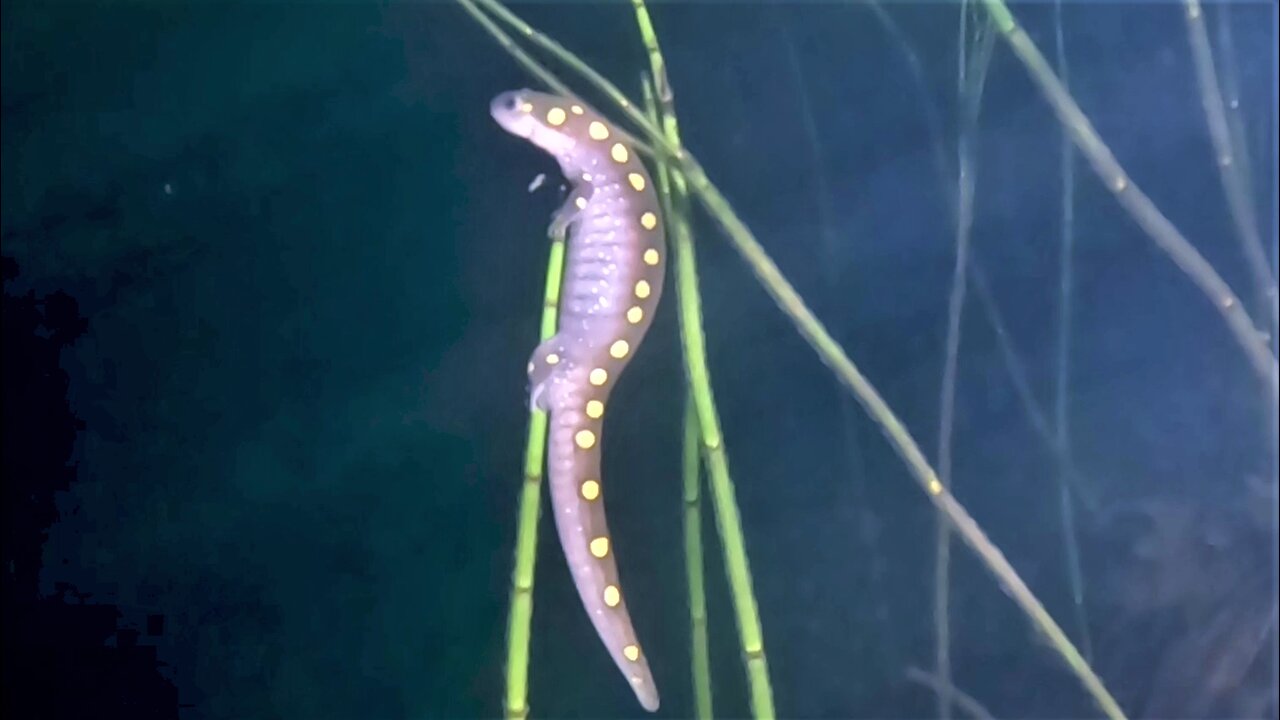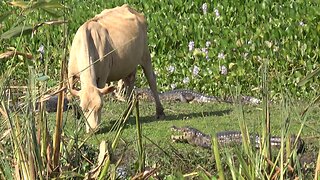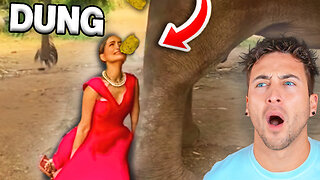Premium Only Content

Salamander lays eggs in secluded forest pond
Yellow spotted salamanders are a rare sight. Although there are great numbers of them in the area surrounding vernal pools in many forests throughout North America, they spend most of their lives burrowed underground. It is rare to catch a glimpse of one out in the open.
But each year, shortly after the ice melts on ponds like this one, the salamanders migrate here in droves, ready to mate and lay eggs underwater. The males arrive first, dropping their spermatophores on the submerged leaves. The females come next, picking up the clusters and taking them into their bodies where the eggs will be fertilized. She then selects a stalk of vegetation or a stick to attach the eggs to.
This videographer went to the local pond each night to watch the salamander migration, the mating frenzy, and the egg laying. It takes place each spring over the course of several days. This female gripped a plant stalk and lay her eggs over the course of 2-3 hours. The eggs emerged and clung to the stalk where they will remain for 6-8 weeks until they hatch.
After the mating is all over, the salamanders leave the pond as abruptly as they arrived. They go back to their refuge under the leaves or the soil, living a solitary life, feeding on worms and insects, until it is time to gather again next spring.
Spotted salamander eggs hatch in 4-8 weeks. The eggs are incredibly unique. The female lays two specific types. In one cluster, the gelatinous mass is a water soluble protein that allows oxygen and carbon dioxide exchange as the embryos develop. The other part of her cluster is surrounded by a gelatinous mass that is made up of a crystalline hydrophobic protein. It inhibits oxygen exchange but these eggs share a symbiotic relationship with an algae that grows within the eggs. The algae produces energy and oxygen through photosynthesis that the embryos use. The carbon dioxide produced by the embryos is consumed by the algae, as is the ammonia produced within the egg. This is the waste product that would harm the eggs. This is the only known true symbiotic relationship between an algae and a vertebrate animal. It is believed that the two types of egg masses will ensure survival in the presence of predators such as wood frogs. The wood frogs will not consume both types of eggs.
Spotted salamanders play an important role in the food chain as they are a major source of food for foxes, raccoons and other forest dwellers.
-
 1:26
1:26
WildCreatures
1 month ago $5.94 earnedCow fearlessly grazes in crocodile-infested wetland
59.1K9 -
 13:15
13:15
Cash Jordan
7 hours ago"INVASION" Mob STRIKES Chicago Jail… FRONTLINE Marines IGNORE Judge, SMASH Illegals
28.3K36 -
 DVR
DVR
SpartakusLIVE
4 hours ago#1 Solo Challenge CHAMPION entertains HERDS of NERDS
15.8K -
 LIVE
LIVE
Alex Zedra
3 hours agoLIVE! New Game | DeathWatchers
328 watching -
 2:59:47
2:59:47
Nikko Ortiz
4 hours agoShotguns With A Magazine... |Rumble Live
14.5K -
 23:18
23:18
Lady Decade
9 hours agoThe Diversity Lie Gaming Refuses To Talk About
12K6 -
 2:41:05
2:41:05
Geeks + Gamers
4 hours agoGeeks+Gamers Play- MARIO KART WORLD
10K1 -
 5:33:12
5:33:12
Midnight In The Mountains™
7 hours agoGaming w/ Midnight | Studio is BACK and SO ARE WE | 3 AWAY FROM 1,500 WILL YOU GET ME THERE?!
5.89K3 -
 1:51:13
1:51:13
Glenn Greenwald
9 hours agoTucker Carlson Speaks at Turning Point, Prompting Cheers and Controversy; More Evidence of Israeli Atrocities Amid Fragile Ceasefire; Tommy Robinson Submits to Re-Education in Israel | SYSTEM UPDATE #536
106K106 -
 3:14:42
3:14:42
SOLTEKGG
4 hours ago🔴LIVE - BATTLEFIELD 6 GIVEAWAY
2.56K